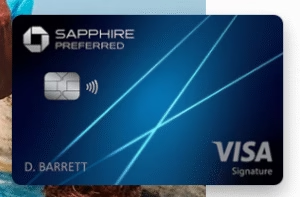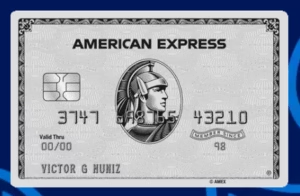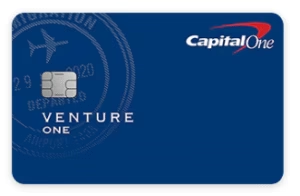What is the best credit card for airline miles?
A complete guide to choosing the best airline miles credit card

For anyone with a touch of wanderlust, the idea of traveling the world for a fraction of the cost is the ultimate dream. Airline miles credit cards are the key to unlocking that dream, transforming your everyday spending into globetrotting adventures. But with a sky full of options, from airline-specific cards to flexible rewards programs, choosing the right one can feel like navigating without a map.
This definitive guide is your flight plan. We’ve researched and analyzed the top credit cards for airline miles in 2025 to help you find the perfect match for your travel style and spending habits. Whether you’re a loyalist to a single airline or a free spirit seeking maximum flexibility, this article will show you how to turn your wallet into a powerful engine for your next journey.
How Do Airline Miles Credit Cards Actually Work?

At its core, an airline miles credit card is a rewards card that gives you “miles” or “points” for every dollar you spend. These aren’t physical miles, but rather a type of currency that you can accumulate and then redeem for flights. You typically earn a base rate on all purchases (e.g., one mile per dollar) and accelerated rates on specific bonus categories, such as travel, dining, or spending directly with an airline.
The value of these miles comes alive during redemption. A substantial sign-up bonus or a year of consistent spending could earn you enough miles to book a round-trip domestic flight—or even a one-way ticket to an international destination—for just the cost of taxes and fees.
Co-Branded vs. General Travel Rewards: Which Card is Your Ticket to Fly?
Before picking a card, you need to understand the two primary types of travel cards. Your choice here will define your entire travel rewards strategy.
- Co-Branded Airline Cards: These cards are a partnership between a bank and a specific airline (e.g., the Delta SkyMiles® Gold American Express Card or the United℠ Explorer Card). The miles you earn are deposited directly into that airline’s frequent flyer account.
- Pros: They offer airline-specific perks like free checked bags, priority boarding, and discounts on in-flight purchases. They can also provide a faster path to elite status with that airline.
- Cons: You’re locked into a single airline’s ecosystem. Your redemption options are limited to that airline and its partners.
- General Travel Rewards Cards: These cards are issued by banks (like Chase, American Express, or Capital One) and earn points in their own flexible rewards program (e.g., Chase Ultimate Rewards®, American Express Membership Rewards®).
- Pros: Unmatched flexibility. You can transfer your points to a wide variety of different airline and hotel partners, allowing you to shop around for the best deals across different alliances. You can also often redeem points for cash back or for travel booked directly through the bank’s portal.
- Cons: They typically don’t offer airline-specific perks like free checked bags or priority boarding on a specific carrier.
For most people, especially those new to travel rewards, a general travel rewards card offers the best starting point due to its incredible flexibility.
The Best All-Around Travel Card for Maximum Flexibility: Chase Sapphire Preferred® Card

- Why it’s our top pick: For years, the Chase Sapphire Preferred® has been the gold standard for travel rewards beginners and experts alike. It offers a fantastic sign-up bonus, solid earning rates in relevant categories, and access to the incredibly valuable Chase Ultimate Rewards® program.
- Rewards Rate:
- 5x points on travel purchased through Chase Travel℠.
- 3x points on dining, select streaming services, and online grocery purchases.
- 2x points on all other travel purchases.
- 1x point on all other purchases.
- Key Benefit: Points are worth 25% more when you redeem them for travel through the Chase portal. Most importantly, you can transfer points at a 1:1 ratio to leading airline partners like United, Southwest, Air Canada, and British Airways.
- Sign-Up Bonus: Earn 60,000 bonus points after you spend $4,000 on purchases in the first 3 months from account opening. That’s $750 when redeemed through Chase Travel℠.
- Annual Fee: $95
- Who it’s for: Anyone who wants the power to choose from a wide array of airlines and travel options. It’s the perfect first travel card.
Are You a Frequent Traveler? The Best Card for Premium Perks: The Platinum Card® from American Express

- Why it’s our top pick: This card is less about earning miles on everyday spending and more about elevating your entire travel experience. It’s a luxury travel card that offers a suite of premium benefits that can be worth thousands of dollars to a frequent flyer.
- Rewards Rate:
- 5x points on flights booked directly with airlines or with American Express Travel (on up to $500,000 on these purchases per calendar year).
- 5x points on prepaid hotels booked on amextravel.com.
- 1x point on all other purchases.
- Key Benefits: This is where the card shines. It offers unrivaled airport lounge access (Centurion Lounges, Delta Sky Clubs when flying Delta, Priority Pass), annual airline fee and hotel credits, Uber credits, Saks Fifth Avenue credits, elite status with Marriott and Hilton, and comprehensive travel insurance. (Enrollment required for some benefits).
- Sign-Up Bonus: Often features a very high welcome offer, typically 80,000 points or more after meeting a spend requirement.
- Annual Fee: $695
- Who it’s for: Frequent travelers who can take full advantage of the extensive list of statement credits and premium benefits, making the high annual fee a worthwhile investment.
The Best Airline Miles Card with No Annual Fee: Capital One VentureOne Rewards Credit Card

- Why it’s our top pick: If you’re hesitant to pay an annual fee but still want to dip your toes into the world of travel rewards, the VentureOne is an excellent choice. It offers a simple, flat-rate earning structure and the same valuable transfer partner flexibility as its more premium sibling, the Venture X.
- Rewards Rate: An unlimited 1.25 miles per dollar on every purchase, every day.
- Key Benefit: You can transfer your miles to over 15 airline and hotel partners, giving you the flexibility that most no-annual-fee cards lack.
- Sign-Up Bonus: A solid, easy-to-earn bonus for a no-annual-fee card, typically 20,000 miles.
- Annual Fee: $0
- Who it’s for: Beginners in the miles and points game, or infrequent travelers who want a simple way to earn flexible travel rewards without committing to an annual fee.
Is a Co-Branded Airline Card Ever Worth It?
While flexible points are generally better, a co-branded card can be a fantastic addition to your wallet if you meet certain criteria:
- You are loyal to one airline: You consistently fly with a specific airline because it dominates your home airport (e.g., Delta in Atlanta, United in Houston).
- You want airline-specific perks: The value of a free checked bag can be significant. For a couple taking two round-trip flights a year, that benefit alone can save over $240, easily justifying a $95 annual fee.
- You are chasing elite status: Many co-branded cards offer ways to earn elite qualifying miles or waive spending requirements, helping you climb the status ladder faster.
Top Co-Branded Pick: United℠ Explorer Card
This card offers great value for United flyers, with benefits like a free first checked bag, priority boarding, two United Club one-time passes each year, and an application fee credit for Global Entry or TSA PreCheck®.
Your Step-by-Step Guide to Choosing the Right Airline Card

- Identify Your Home Airport’s Hub: Which airlines have the most flights out of your local airport? Pledging loyalty to an airline that has a limited presence in your city is a losing strategy.
- Define Your Travel Goals: Are you saving up for a family vacation to Disney World, a solo backpacking trip through Asia, or a luxury honeymoon in business class? Your goals will determine whether you need domestic economy tickets or high-value international premium cabin seats.
- Analyze Your Spending: Look at your biggest budget categories. If you spend a lot on dining and travel, a card like the Chase Sapphire Preferred® is a natural fit.
- Evaluate Your Appetite for Annual Fees: Be realistic. Can you extract enough value from a premium card’s benefits to justify its fee? If not, start with a no-annual-fee or low-fee option.
How to Squeeze Every Last Drop of Value From Your Miles
Earning miles is only half the battle. Redeeming them wisely is how you unlock incredible value.
- Understand Transfer Partners: This is the most important concept. Transferring your Chase or Amex points to an airline partner is almost always how you get the most value. For example, you could transfer 60,000 points to an airline’s program to book a business-class flight that would have cost $4,000 in cash.
- Aim for a High Cent-Per-Mile (CPM) Value: To calculate this, use the formula:
(Cash Price of Flight - Taxes/Fees) / Number of Miles Required. A good target is to get at least 1.5 cents per mile, but with smart redemptions, values of 2 to 5 cents (or even higher) are possible. - Be Flexible with Your Dates and Destinations: Airline award charts are dynamic. If you can travel during the off-season or are open to flying into a nearby airport, you can often find award tickets for significantly fewer miles.
- Book Well in Advance or Last Minute: Award seats are often released about 11 months in advance. Alternatively, airlines sometimes release unsold seats as awards in the weeks leading up to the flight.
By choosing the right card and mastering a few key redemption strategies, you can transform your everyday spending into a passport for unforgettable travel experiences. The journey begins with a single application.





